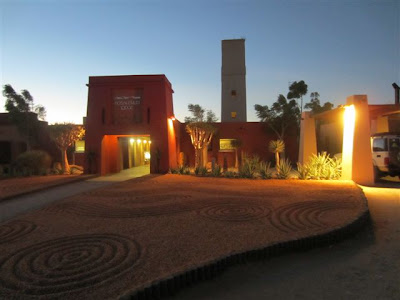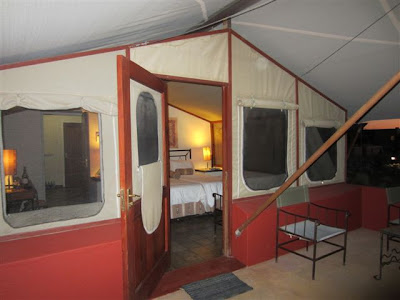We stopped at Solitaire on the way from Walvis Bay to the Namib Naukluft Park, for tea and for Moose's famous apple tart.
Sossusvlei Lodge is situated 330 km south west of Windhoek on a 40 000 hectare private reserve in the Namib Desert.
Namib Naukluft Park has some of the highest dunes in the world's oldest desert. Sossusvlei is surrounded by monumentally high dunes, with sinewy crests and warm colours changing as the day progresses. The warm tints of the sands range from apricot to orange, red and maroon and contrast vividly against the dazzling white surfaces of the clay pans at their bases.
Hiking down Sesriem Canyon, close to Sossusvlei, where centuries of erosion have cut a narrow gorge about 1 km in length and 40m in height. Sesriem derives its name from the time when early pioneers tied 6 lengths of rawhide thongs together to draw water from the pools.






























































